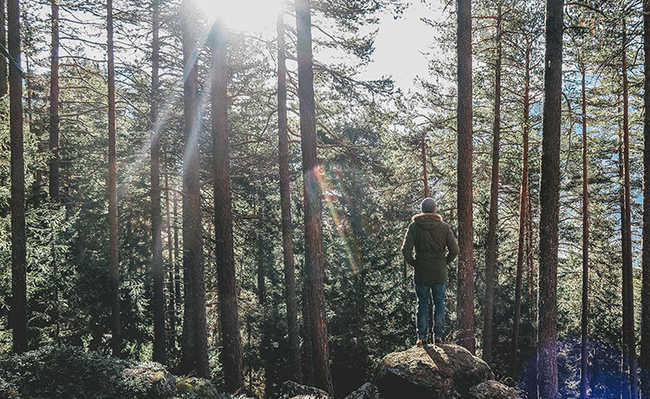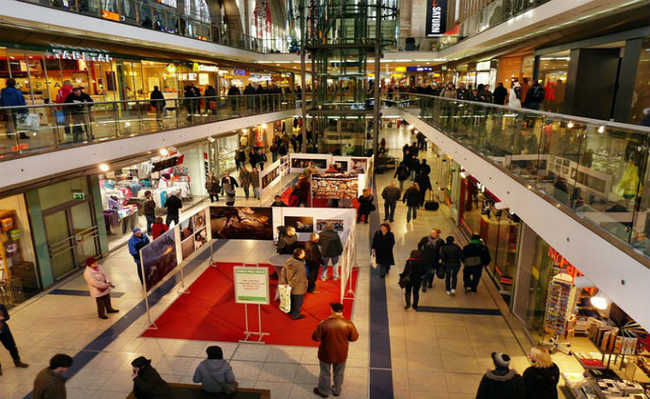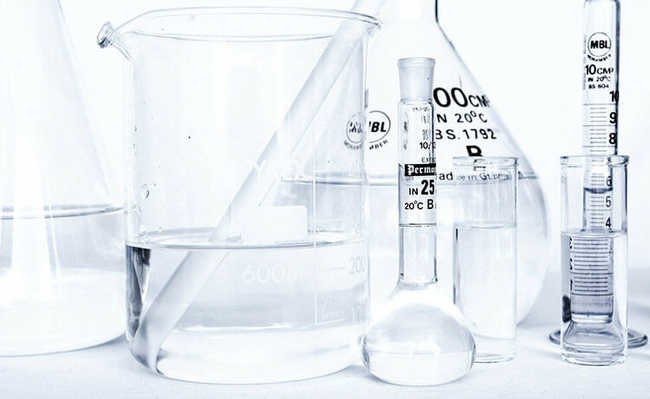What is blue light and its dangers
Understand how best to deal with blue light and how to prevent damage to health

Blue light is a range of visible light spectrum, with a wavelength between 400 and 450 nm. Hypothetically, if we could divide white light into parts, blue light would be one of its components.
There are natural blue light sources, such as the sun, and artificial sources, such as electronic equipment. Exposure to unnatural blue light sources is becoming ever greater, originating from a variety of technologies such as computers, cell phones, televisions and light bulbs.
Much of the unnatural exposure to blue light is due to the use of LED lamps. That's because many white LEDs are produced by pairing a blue LED with a lower energy phosphor, thus creating solid-state light (LES). This technology has been considered the "illumination of the future" as it uses very few energy resources compared to other lamp technologies and does not contain mercury.
However, in addition to causing light pollution (as with any other type of lamp), LED lamps have other contaminants in their composition, such as lead and arsenic, and have been a source of exposure to unnatural blue light, representing health risks .
Harms of artificial blue light

Hunter Newton image/ available on Unsplash
Exposure to artificial blue light has been shown to affect human health. While natural exposure to blue light during the day improves mood, alertness and mood, prolonged exposure to blue light from everyday technologies (especially at night) affects the circadian rhythm, causing a number of harmful effects.
Scientists believe this is due to the presence of blue light-sensitive cells in the retina, which suppress the production of melatonin (an important sleep-promoting hormone).
Effects of Blue Light on Eye Health
In some animal studies, blue light from LED light sources caused damage to retinal photoreceptor cells. Acute exposure to high-intensity light, such as blue light, caused loss of photoreceptor cells in monkeys. rhesus and other animal species, such as rats, in which LED lighting has caused damage even at domestic exposure levels.
However, these damages vary from time to time. The intensity of harmful effects is three to four times greater at night than during the day.
These data raise significant concern about the potential negative effect of blue light on human retinas at night. However, according to the same author, there are some concerns regarding the use of blue LED in practices such as color therapy or in light toys - in the latter case because the eyes of young children are more sensitive to light.
Some studies also suggest that chronic exposure to blue light may increase the risk of developing macular degeneration and other age-related pathologies.
An epidemiological study has also shown that exposure to sunlight - a natural source of blue light - increases the risk of early macular changes. However, this specific association of blue light effects is difficult to assess in humans and deserves further study.
Furthermore, studies have shown that blue light can lead to dysfunction in mitochondria, which are present in high concentrations in retinal ganglion cells.
Effects on sleep and circadian rhythm
Looking at a cell phone screen at night can affect your ability to sleep. An experiment that evaluated the effects of exposure to darkness, yellow light, and blue light at night found that blue light inhibits drowsiness, whereas yellow light has no significant effects on sleep; and darkness promotes the feeling of drowsiness.
Exposure to blue light for a long time, according to a study, has reduced the average number of hours of sleep in the population in the last two decades. Teenagers, who need to sleep at least nine hours a night, are getting less and less sleep. This can cause them to eat more, exercise less, and become depressed.
Another study found that teenagers are more likely to have behavioral problems and have difficulty concentrating during the day if they spend time exposed to blue light from electronic devices.
A survey that measured the effect of iPads showed that after one hour of using the device, there was no noticeable change in melatonin (the sleep hormone). However, after two hours of exposure to light from the iPad, sleep hormone levels have dramatically decreased. Blue light has been found to affect teenagers more than adults. Teenagers were more alert and awake compared to adults, even when exposed to just a tenth of the blue light that adults were exposed to. In another study, a group of people spent a week camping outdoors without any blue light devices. At the end of the week, the circadian rhythm of the entire group accompanied the sunrise and sunset.
Using computers and cell phones in the hours immediately before bedtime can lead to fewer hours of deep sleep. Staying up late to study for an exam may seem prudent, but research has found that the practice can actually impede memory retention. A clinical psychological study found that students who were able to sleep earlier and sleep more received better grades than students who slept less.
How to protect yourself at night?
As we've seen, exposure to natural blue light during the day is beneficial to health and helps keep the body awake. Therefore, we must expose ourselves to it during the day. However, as it gets dark, the ideal is that the body is exposed less and less to this type of lighting.
To avoid exposure to blue light at night, reducing the risk of developing diseases and conditions such as insomnia, it has been recommended to wear yellow glasses or glasses with a blue light filter; incandescent lamps; blue light filters for electronic devices; firelight and reduced use of electronic devices at dark. However, it is necessary to be aware of the environmental footprint of each of these technologies, as fire and incandescent light bulbs, for example, consume a lot of energy resources.
- Insomnia: what is it, teas, remedies, causes and how to end it
One way to avoid a lot of energy waste is to use white LED bulbs - which emit blue light - during the day (but trying to make the most of natural daylight) and at night turn on versions of bulbs with more yellowish luminosity. To do this, plan your home lighting intelligently.
According to a study published on the platform PubMedAnother way to increase protection against the harmful effects of blue light is to consume foods rich in lutein and zeaxanthin, such as watercress, chlorella, pumpkin and kiwi fruit.
- Watercress Benefits
It is necessary to rethink the use of artificial light
Light pollution poses a huge threat to quality of life. That's because human life as we know it took thousands of years to evolve and develop a biological rhythm adapted to natural lighting. During the night, from sunset onwards, body temperature decreases, as well as metabolism and hunger; while drowsiness and the level of melatonin in the blood increase.
The short-wavelength blue light is the most effective in suppressing melatonin and slowing nocturnal physiology; meanwhile, longer, darker light—yellow, orange, and red, from a fire or candle, for example—has very little effect on melatonin levels.
Bright sunlight contains blue light, which is a benefit in the morning when we need to be alert and awake. However, if we expose ourselves to blue light after sunset, we trick our organism into working as if it were day.
According to NASA's atlas, the Milky Way cannot be seen at night by a third of humanity. In Europe it is not visible to 60% of people and in North America to 80%. The current "light nightmare" is analogous to the road-building frenzy, which aimed to solve the problem of congestion in the United States.
But the roads ended up increasing congestion and pollution, including light pollution. The solution was to build a bigger highway, making more people use cars, to the point where there was more traffic jams than before the new road.
To understand the phenomenon, economists have developed the concept of "induced demand" - in which the supply of a commodity really creates demand for it. So the more roads you build, the more people use them, which results in more congestion. Similar to the use of roads, more efficient energy production and use, without effective education, administration and public regulation, can aggravate the problem of light pollution.
For the development of society, the right at night and at dark must be taken seriously. As with water and air pollution, we need to rethink light pollution caused by artificial light.










